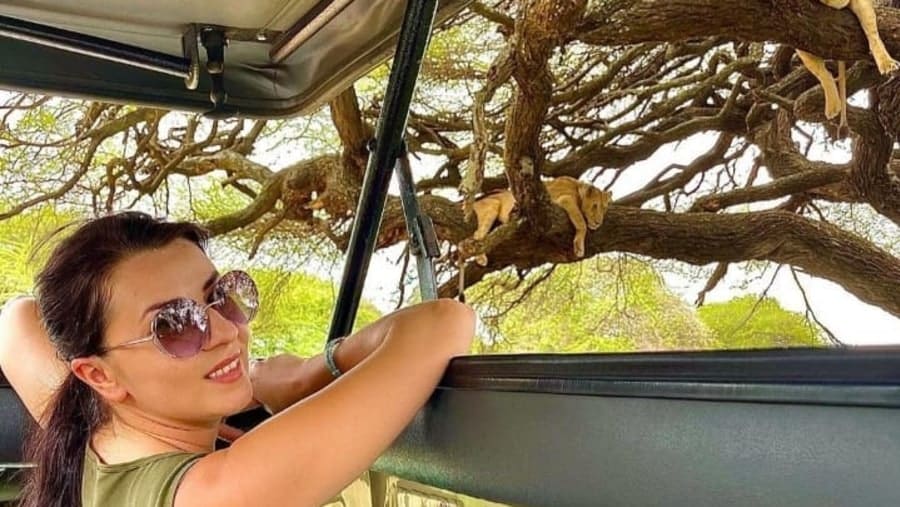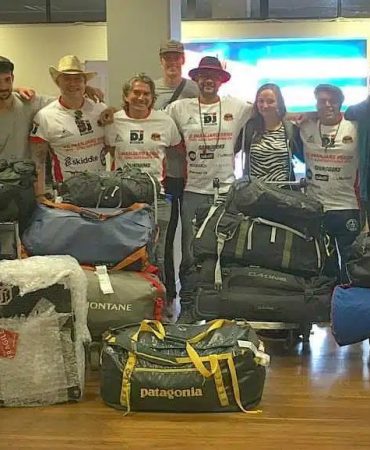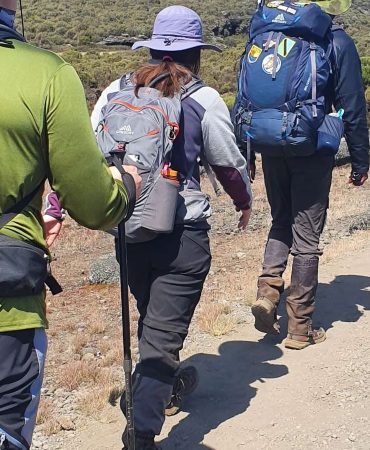Ultimate Kilimanjaro Preparation Guide: Prepare for the ultimate adventure with our Ultimate Kilimanjaro Preparation Guide! Discover 5 life-changing hacks, covering physical conditioning, mental preparation, essential gear, nutrition, and acclimatization for an unforgettable climb. Ultimate Kilimanjaro Preparation Guide your comprehensive resource for conquering Africa’s highest peak.

Ultimate Kilimanjaro Preparation Guide
Introduction
Brief Overview of Mount Kilimanjaro
Mount Kilimanjaro, Africa’s highest peak, stands majestically at 19,341 feet (5,895 meters) above sea level. This dormant volcano, located in Tanzania, attracts thousands of climbers from around the world each year. Its allure lies not only in its height but also in its diverse ecosystems and breathtaking landscapes.
Importance of Proper Preparation
Ultimate Kilimanjaro Preparation Guide: Climbing Kilimanjaro is a challenge that requires thorough preparation. Adequate planning and training can make the difference between a successful summit and an early retreat. From physical conditioning to mental readiness, every aspect of preparation is crucial.
Overview of the 5 Life-Changing Hacks
To help you achieve a memorable and successful climb, we have compiled five essential hacks:
- Physical Conditioning
- Mental Preparation
- Gear and Equipment
- Nutrition and Hydration
- Acclimatization
These hacks are designed to ensure you are fully prepared for the climb, enhancing your chances of reaching the summit and having an unforgettable experience.
Hack 1: Physical Conditioning
Importance of Physical Fitness
Ultimate Kilimanjaro Preparation Guide: Physical fitness is paramount when preparing for Kilimanjaro. The climb involves long days of hiking with significant elevation gains, demanding both endurance and strength. Proper conditioning will not only make the trek more enjoyable but also reduce the risk of injury.
Cardiovascular Training
Cardiovascular fitness is essential for enduring the prolonged exertion required on the mountain. Engage in activities such as running, cycling, and swimming to improve your cardiovascular health. Aim for at least 30 minutes of cardio exercises, 4-5 times a week.
Strength Training
Ultimate Kilimanjaro Preparation Guide: Strength training helps build the muscles needed to carry your gear and navigate the rugged terrain. Focus on exercises that target your legs, core, and upper body. Incorporate squats, lunges, deadlifts, and upper body exercises like push-ups and pull-ups into your routine.
Flexibility and Balance Exercises
Ultimate Kilimanjaro Preparation Guide: Flexibility and balance are crucial for preventing injuries and enhancing overall performance. Incorporate yoga or pilates into your training regimen to improve flexibility. Balance exercises such as single-leg stands can also be beneficial.
Recommended Training Schedule
A balanced training schedule should include:
- Cardio: 4-5 times a week
- Strength Training: 2-3 times a week
- Flexibility/Balance: 2-3 times a week
Ultimate Kilimanjaro Preparation Guide: Begin your training at least 3-6 months before your climb to ensure your body is well-prepared for the challenge.
Hack 2: Mental Preparation
Psychological Challenges of the Climb
The psychological aspect of climbing Kilimanjaro is often overlooked. The mental strain of long days, extreme weather conditions, and the physical demands can be overwhelming. Mental preparation is as crucial as physical training.
Techniques for Building Mental Resilience
Building mental resilience involves developing the ability to cope with stress and adversity. Techniques such as visualization, where you imagine yourself successfully reaching the summit, can be powerful. Setting small, achievable goals during your climb can also help maintain motivation.
Meditation and Mindfulness Practices
Meditation and mindfulness practices can enhance mental clarity and reduce stress. Regular practice of meditation can help you stay focused and calm during the climb. Mindfulness, or being present in the moment, can improve your overall experience and help you appreciate the journey.
Setting Realistic Expectations
Setting realistic expectations involves understanding the challenges and accepting that the journey may not be smooth. Being mentally prepared for setbacks and maintaining a flexible mindset will help you stay positive and focused on your goal.
Importance of a Positive Attitude
A positive attitude can significantly impact your climbing experience. Embrace the challenges and view them as opportunities for growth. Encourage your fellow climbers and celebrate small victories along the way.
Hack 3: Gear and Equipment
Essential Gear for the Climb
Having the right gear is crucial for a successful Kilimanjaro climb. Essential items include:
- A sturdy backpack
- Quality hiking boots
- Layered clothing
- Sleeping bag
- Trekking poles
Choosing the Right Clothing
Layered clothing is vital due to the varying climate conditions on Kilimanjaro. Your clothing system should include:
- Base Layer: Moisture-wicking fabric
- Insulating Layer: Fleece or down jacket
- Outer Layer: Waterproof and windproof jacket and pants
Footwear: Boots and Socks
Invest in high-quality, waterproof hiking boots with good ankle support. Break them in before your climb to avoid blisters. Use moisture-wicking socks to keep your feet dry and comfortable.
Sleeping Gear: Bags and Mats
A warm sleeping bag rated for -10°C to -20°C is essential. Additionally, a sleeping mat will provide insulation from the cold ground and enhance comfort.
Other Essential Equipment: Poles, Headlamps, etc.
Trekking poles help reduce the impact on your knees and provide stability. A headlamp is necessary for early morning and late evening hikes. Other essentials include a water bottle, a first aid kit, and personal hygiene items.
Hack 4: Nutrition and Hydration
Importance of Proper Nutrition
Proper nutrition fuels your body and supports endurance. Eating a balanced diet rich in carbohydrates, proteins, and fats is essential for sustained energy.
Recommended Diet Before the Climb
In the weeks leading up to your climb, focus on a diet rich in complex carbohydrates, lean proteins, and healthy fats. Foods such as whole grains, vegetables, fruits, nuts, and lean meats are excellent choices.
Eating During the Climb
During the climb, aim for small, frequent meals to maintain energy levels. Portable snacks such as nuts, dried fruits, and energy bars are convenient. Meals provided by tour operators are usually tailored to provide the necessary nutrients.
Hydration Tips
Staying hydrated is critical, especially at high altitudes where dehydration can exacerbate altitude sickness. Drink at least 3-4 liters of water daily. Electrolyte solutions can help maintain the balance of salts in your body.
Supplements and Energy Boosters
Supplements such as vitamin C, iron, and magnesium can support your energy levels and overall health. Energy gels and chews can provide quick boosts during strenuous sections of the climb.
Hack 5: Acclimatization
Understanding Altitude Sickness
Altitude sickness occurs when the body struggles to adapt to the lower oxygen levels at high altitudes. Symptoms include headaches, nausea, dizziness, and fatigue. In severe cases, it can be life-threatening.
Acclimatization Strategies
To prevent altitude sickness, ascend gradually and give your body time to adjust. The “climb high, sleep low” strategy, where you hike to a higher altitude during the day and descend to sleep, can be effective.
Choosing the Right Route
Some Kilimanjaro routes offer better acclimatization profiles. The Lemosho and Machame routes, for instance, provide a more gradual ascent and better acclimatization opportunities compared to the shorter Marangu route.
Slow and Steady Ascent
Pacing yourself is crucial. Walk slowly, even if you feel capable of moving faster. This helps your body adjust to the altitude and reduces the risk of altitude sickness.
Monitoring Health and Well-being
Regularly monitor your health for signs of altitude sickness. Communicate any symptoms to your guide immediately. Oxygen saturation monitors can be useful for keeping track of your oxygen levels.
Additional Tips for an Unforgettable Climb
Choosing the Best Time to Climb
The best times to climb Kilimanjaro are during the dry seasons: January to March and June to October. These periods offer more stable weather conditions and clearer skies.
Picking the Right Guide Service
Choosing a reputable guide service is crucial. Look for companies with experienced guides, good reviews, and a strong safety record. A good guide service can greatly enhance your climbing experience.
Environmental and Ethical Considerations
Respect the environment by following Leave No Trace principles. Support ethical tour operators who treat their staff fairly and contribute to the local community.
Packing Tips
Pack light but ensure you have all essentials. Use a packing checklist to stay organized. Consider packing cubes to keep your gear sorted and easily accessible.
Safety Precautions
Safety should always be a priority. Follow your guide’s instructions, stay hydrated, and listen to your body. Carry a first aid kit and know how to use it.
Frequently Asked Questions (FAQs)
What is the Best Time of Year to Climb Kilimanjaro?
The best times to climb are during the dry seasons: January to March and June to October. These periods offer the most stable weather conditions.
How Long Does It Take to Climb Kilimanjaro?
The climb typically takes 5-9 days, depending on the route chosen and the acclimatization strategy.
Do I Need Technical Climbing Skills?
No, Kilimanjaro is a non-technical climb. However, it requires a good level of fitness and endurance.
What Are the Costs Involved?
Costs vary widely but generally range from $1,500 to $4,000, depending on the guide service and route chosen.
How Can I Prevent Altitude Sickness?
Prevent altitude sickness by acclimatizing properly, ascending slowly, staying hydrated, and monitoring your health for symptoms.
Conclusion
Recap of the 5 Life-Changing Hacks
To ensure an unforgettable climb, remember to:
- Focus on Physical Conditioning
- Prepare Mentally
- Equip Yourself Properly
- Maintain Proper Nutrition and Hydration
- Acclimatize Correctly
Final Words of Encouragement
Climbing Kilimanjaro is a life-changing experience. With the right preparation, you can overcome the challenges and enjoy the journey to the summit.
Call to Action for Further Preparation
Start your preparation today. Research, train, and equip yourself with the knowledge and tools needed for a successful climb. Embrace the journey and make it a memorable adventure.
Video




